#native violet
Explore tagged Tumblr posts
Text
youtube
Bush foods are on the menu of fancy restaurants everywhere, but Clarence has some tips for growing your own. And if you’re short of space don’t worry – many edible native plants are perfectly suited to growing in containers.
Clarence is combining a few plants in a large 50cm pot – you need something at least 40cm across to give plants room to grow. The plastic pot will then sit inside a more ornamental holding pot, which will also help insulate the inner pot from the direct sun.
The pot is filled with a premium potting mix that will provide good drainage and nutrition. For some natives, especially those in the Proteaceae family, a low-phosporous mix is essential, but for the plants Clarence has chosen, any premium mix is suitable.
As a central feature plant, Clarence has chosen a favourite – Cinnamon myrtle, which is related to lemon myrtle. Both can be used to make a herbal tea; simply cover 1-2 leaves with hot water and allow to steep. The leaves can also be used in baking and even curries. Both trees also originate from rainforests along Australia’s east coast, so need protection from hot afternoon sun. As a small tree, is will get quite large in the pot but can be kept small by regular pruning; trim back to just above a leaf node to encourage more leaf growth.
Next in the pot is Midyim berry (Austromyrtus dulcis). It has pretty white star-shaped flowers, but its main attraction is the fruit that develop from these. Clarence describes their taste as a mix between cinnamon, blueberry and sherbet. There are a few Austromyrtus species to choose from in the garden. Narrow-leaf Myrtle is slightly taller, and a hybrid of the two is called ‘Copper Tops’, named for its reddish new growth.
Clarence adds an Apple Berry to the pot, too. These will grow in a range of climate, and produce tubular fruit that are ripe to eat when yellow. Clarence describes the flavour as between kiwifruit and stewed apple (with a seed inside)!
Their scrambling habit means they can trail over the edge of the pot.
The final plant for the pot is a native violet, whose flowers can be used to decorate cakes and salads.
Filmed on Dharawal Country in Heathcote, NSW
Featured plants:
Cinnamon myrtle (Backhousia myrtifolia )
Lemon myrtle (Backhousia citriodora)
Midyim berry (Austromyrtus dulcis)
Narrow-leaf Myrtle (Austromyrtus tenuifolia)
Midyim berry (Austromyrtus dulcis x tenuifolia ‘Copper Tops’)
Apple berry (Billardiera scandens)
Native violet (Viola banksii)
Useful links:
https://www.abc.net.au...
https://www.abc.net.au...
https://www.abc.net.au...
#gardening australia#solarpunk#australia#native plants#native species#edible plants#potted plants#garden#gardening#plants#Cinnamon myrtle#Lemon myrtle#Midyim berry#Narrow-leaf Myrtle#Apple berry#violet#native violet#Youtube
2 notes
·
View notes
Text

🪻🌱🐝 💜 🌿 ✨ // violets & violet miner bees // part of my natives + pollinators series // gouache on paper
tiny violet miner bees (Andrena violae) are a specific pollinator: they pollinate wood & dog violets in the Northeast, and show a strong preference for blue violets. letting your grassy yard rewild itself and grow violets every spring not only lets you make violet syrup, it also gives violet miner bees their most important food source and increases local pollinator diversity.
#my art#gouache#illustration#painting#art#cottagecore#artists on tumblr#botanical#spring#violet#pollinator#pollinators#native wildflowers#native plants#eco lawn#botanical illustration#violet miner bee#bees#cw: insects#insects
1K notes
·
View notes
Text

Violet Triggerplant
Wildflowers are still blooming. I love how the centre of the blooms look like tiny pearls
#photographers on tumblr#original photographers#nature photography#nature#western australia#australia#photography#landscape photography#landscape#lensblr#western australian wildflower#flowers#flower photography#flower#purple flowers#purple#female photographers#female artists#australian native flowers#australian flora#lensblr network#lensbaby velvet 85#velvet 85#violet triggerplant#west-australian-wildflowers
152 notes
·
View notes
Text

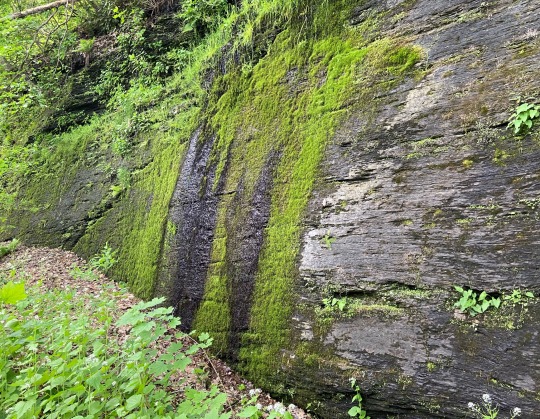
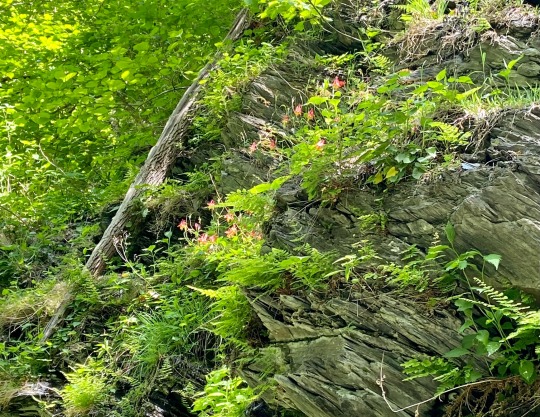
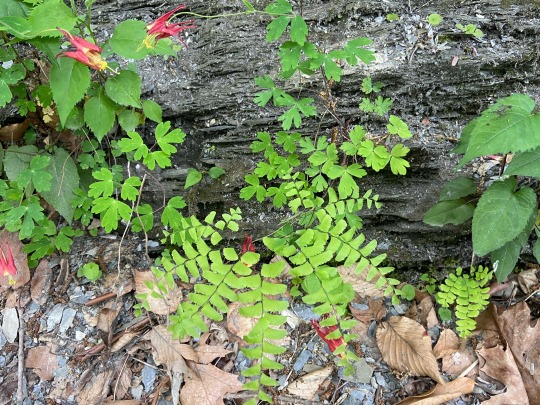
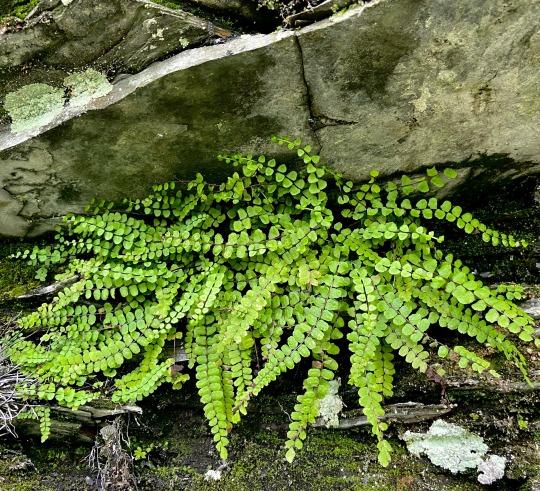
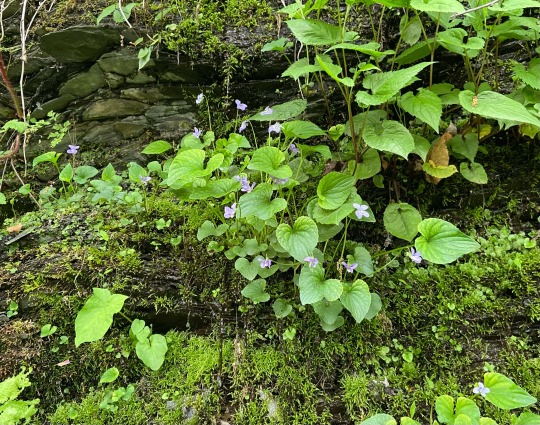
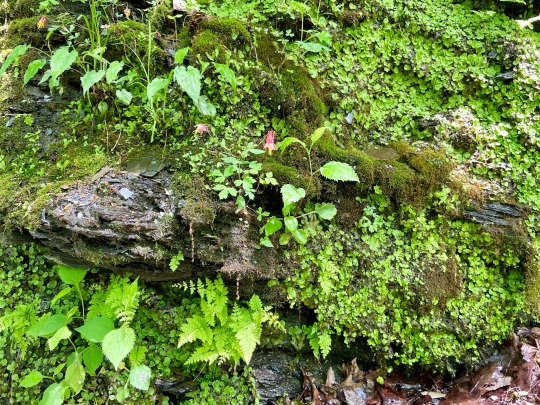
3 years ago today I visited some cliffs along the Lehigh River. Water seeped and dripped from them constantly and the were covered with a wonderful mix of mosses, lichens, liverworts and other native plants.
#pennsylvania#landscape#cliffs#cliff seep#2021#may#springtime#columbine#maidenhair fern#maidenhair spleenwort#violets#plants#native plants#plantblr
353 notes
·
View notes
Text
Ok, so I've just rewatched a half of Ducktales reboot and... Got a new hyper fixation I guess. Last time I watched it was when I was nine or ten. And I saw only two or three episodes, which I can't really remember.
But this show is amazing! Love art style it's so cool, it reminds me about some of my favourite comicks. Also, the characters and the lot were great! Especially, my new two beloved ones: Donald and Violet. I haven't watched third season yet, but I'm sure it will be great! :)
Really, look at them, they are so adorable🤩


#cartoons#ducktales#ducktales 2017#donald duck#violet I'm sorry I don't know her last name#yess I love finding new great cartoons#also I'm not native English speaker#so there can be a lot of mistakes sorry#what else should I tag?
51 notes
·
View notes
Text
Just a tiny bit bitter that someone (jokingly) reblogged that post about plants and bugs to call me a spotted lantern fly when the post was originally because I was trying to look up wood violets and getting a bunch of pages about how to kill these lovely native wildflowers because they. . . look "bad" in the desolate wastelands that Americans call "yards."
I am fully in favor of culling invasive species (in a way that is quick and minimizes their suffering), but can we not just think about the implications with regards to how much of our world is seen as a pest to remove and destroy. Please. For me.
#and before anyone goes 'um ACTUALLY'#i am talking about the wood violets/common blue violets native to north america#not ones found in eurasia or anywhere else
180 notes
·
View notes
Text

Violet tricolor or wild Pansy (lat. Víola trícolor).
Violet is the floral emblem of the Swedish province of Ongermanland. 🇸🇪It is considered one of the oldest cultivated plants that have ever been grown on earth, native to the Mediterranean during the Roman Empire.
A favorite ingredient of pastry chefs and cooks. The leaves resemble lettuce leaves, and the flowers may have a sweet mint flavor and floral aroma.✨️
Фиалка трёхцветная или Анютины глазки (лат. Víola trícolor).
Фиалка – цветочная эмблема шведской провинции Онгерманланд.🇸🇪 Считается одним из самых старых культурных растений, которые когда-либо выращивали на земле, родом из Средиземноморья времен Римской империи.
Любимица кондитеров и поваров. Листья напоминают салат-латук, а цветки могут иметь сладковато-мятный вкус и цветочный аромат.✨️
#noseysilverfox#photography#violet flower#flowers#summer#naturecore#wildlife photography#plant#native plants#botanic garden#random facts#interesting#flora photography#flora fauna#garden#beautiful village#original photography on tumblr#original photography blog#photos#russia#фотоблог#природа#nature#лето#purple flower#atmospheric#summer aesthetic#nature aesthetic#интересные факты#фотографии природы
115 notes
·
View notes
Text
I strongly believe Powder is Jinx.
(I've only watched 3 episodes, so DON'T CORRECT ME. But I rly think she is Jinx. My bsf tells me I'm wrong but she's all the way in the second season, and I know she's lying, so I don't believe her)
I've wanted to watch Arcane for a while now, but I don't have Netflix, so I can only watch it at my bsf's (sad life). We started watching it yesterday, but we only got through 3 episodes.... I rly wanna keep watching dude.
I love my bro sm tho, cuz she watches it and comments on it like it's her first time watching. She can ask me questions about stuff (that happens or about characters for example) that I know she already knows, but ig she just wanna clue me in on stuff. Sjrjwksjekw.
Anywaysss, I'm intrigued by Arcane, and I lowkey already understand the hype about it.
#arcane#jinx arcane#jinx league of legends#just wanna add that EPISODE 3 S1 BROKE MY HEART#powder#powder arcane#I ALSO RECENTLY SAW A TIKTOK VIDEO WHERE ONE CERTAIN SCENE OF S2 WAS PLAYED IN DIFFERENT LANGUAGES AND WHEN MY NATIVE LANGUAGE CAME ON-#I INSTANTLY HEARD THAT IT'S THE SAME VOICE ACTOR FOR VI AS IT IS FOR YAZ. THEY'RE “PLAYED” BY THE SAME VA#I repetedly said “SHUT UP SHUT UP SHUT UP” a thousand times when i heard it#*smh* this gal loves va'ing gay characters i see#now “va'ing” looks like “vaping” but censored lol#i meant “voiceacting” if that wasn't clear#...#kay bye#yasmina fadoula#vi arcane#violet arcane
21 notes
·
View notes
Text

It's been. That's about all I can say. In the two weeks since I turned in the completed manuscript of The Everyday Naturalist to the publisher, I have been to Portland both weekends for teaching and tours, written a bunch of shorter-form pieces, AND compiled all the numbers and paperwork for my taxes, which is a very complicated process given that I'm self-employed and doing a bunch of different things for a living. And my to-do list is still super full for the next couple of weeks as I try to get everything done that needs to be done before I head out on the road for Missouri again.
But, like this stream violet (Viola glabella), I am emerging from under all of the detritus into a new spring day. I'm incredibly fortunate that the bulk of what I am busy with is made of all things that I love doing, and that there's enough of it to keep me afloat. And I have some great plans as the year continues to unfold, so keep your spring peepers on this space!
54 notes
·
View notes
Text

Violet Wood Sorrel
Oxalis violacea
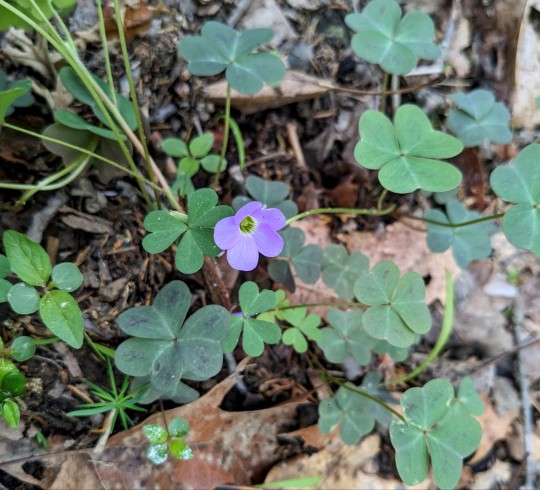
This beautiful oxalis violacea with showy, soft violet blooms is a perennial species native to the eastern and central United States.
May 12th, 2023
Jefferson County, Missouri, USA
Olivia R. Myers
@oliviarosaline
#botany#plants#flowers#Oxalis violacea#oxalis#shamrocks#clovers#Oxalidaceae#dicots#nature#forest floor#forest#woods#naturecore#fairycore#cottagecore#Missouri#Hiking Missouri#hiking#sour trefoil#exploring#exploring the woods#the ozarks#ozarks#Missouri nature#violet#violet flowers#purple#purple flowers#native plants
40 notes
·
View notes
Text


viola sororia - common wood violets
#viola sororia#flowers#violas#violets#common blue violet#us native plants#the white one is a cultivar named 'freckles' and i LOVE THAT#my photos
36 notes
·
View notes
Text
Colin, out of the blue, right in the middle of the dinner: Pen, marry me, please!
Bridgertons in the dinning room:
*silenced in stupor*
Pen, swallowing the air: wait... why... I mean... what the fuck... sorry, mrs. Bridgerton... Colin, we're friends... and you don't want me... I don't understand.
Benedict: dear family, we should open a bottle of champagne, he finally got it.
Violette: you can call me Violette, Penelope, darling. Colin, make a normal proposal. Eloise, don't make a plan to kill your brother.
#sorry en-sh isn't my native language tell about mistakes#c'mon pen is almost one of bridgertons#bridgertons love pen#polin#penelope queen featherington#penelope featherington#colin bridgerton#bridgerton#the bridgertons#bridgerton family#tv: bridgerton#benedict and his sarcasm#benedict bridgerton#violet bridgerton
167 notes
·
View notes
Text
I remember you closing the shutters and laying down by my side and the light that was just slipping through it was painting your body in stripes
#music#Local Natives#Violet Street#When Am I Gonna Lose You#love me some lyrics that create strong narrative vignettes#Bandcamp
43 notes
·
View notes
Text

Viola canadensis / Tall White Violet at the Sarah P. Duke Gardens at Duke University in Durham, NC
#Viola canadensis#Viola#violaceae#Tall white violet#White violet#Canadian white violet#Canada violet#Edible plants#Edible flowers#Native plants#Native flowers#Plants#Flowers#Nature photography#photographers on tumblr#photography#Sarah P. Duke Gardens#Duke Gardens#Duke University#Durham#Durham NC#North Carolina#🌺🌻
12 notes
·
View notes
Text
Common Violet
Sometimes you must bend down and look closely to find the little gems
Viola sororia Native to Eastern North America Stemless Spreads by stolons and forms small colonies Flowers white with purple veining only occasionally Downy, wide-heart-shaped leaves Stops blooming in hot summer weather Great ground cover

View On WordPress
10 notes
·
View notes
Text




Common Blue Violets (Viola sororia) scattered around the backyard this morning... with a Sweet Gum fruit (Liquidambar styraciflua).
#nature#my photography#wildflowers#nature photography#flowers#backyard nature#native plants#wild violets
11 notes
·
View notes